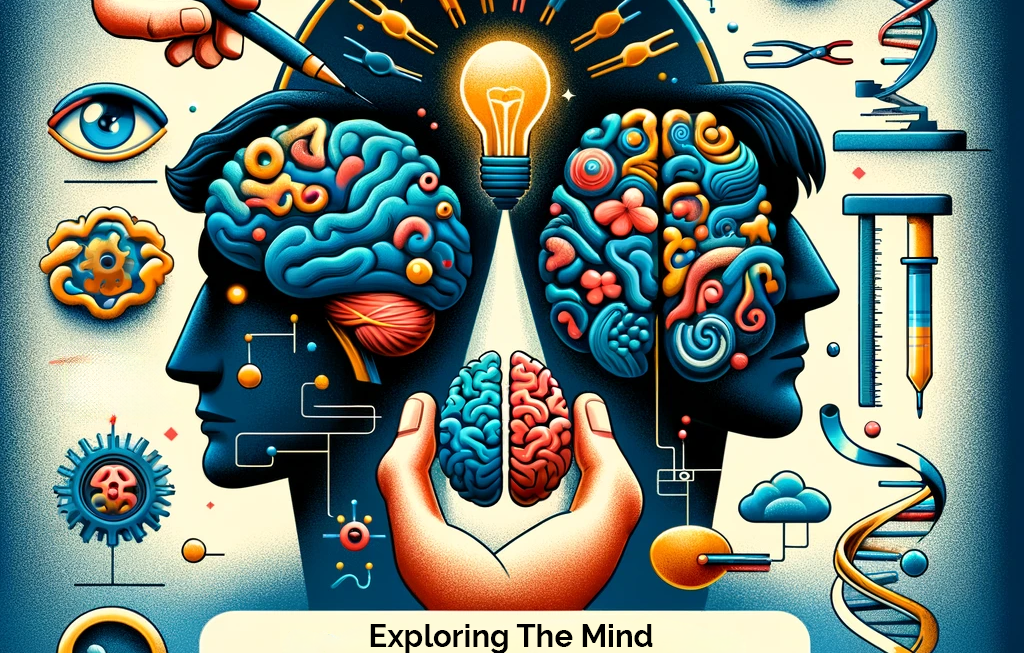Embarking on an exploration of the human brain and behavior can seem like setting sail into a vast, uncharted sea. The field of biopsychology offers a map and compass for this journey, employing innovative research methods to navigate the complex interplay between biological processes and psychological phenomena. This guide is designed for newcomers to the field, breaking down complex concepts into digestible, engaging content.
The Power of Comparative Studies
Comparative studies are a cornerstone of biopsychology, providing invaluable insights by comparing the brain structures, functions, and behaviors across different species. This method rests on the premise that by understanding other animals, we can gain perspective on human evolution, behavior, and cognition.
- Why Compare? The rationale is simple yet profound: many aspects of human biology and behavior have ancient roots. By observing animals with simpler nervous systems, researchers can identify fundamental biological mechanisms that underlie complex behaviors, such as learning, memory, and emotion.
- Case in Point: Consider the study of birdsong in relation to human language acquisition. Researchers have discovered parallels in how songbirds and humans learn their vocalizations, suggesting a common evolutionary basis for speech and language.
Unlocking Genes: The Role of Genetic Manipulation
Genetic manipulation allows scientists to delve into the genetic underpinnings of behavior by modifying the DNA of model organisms, such as mice or fruit flies. This can involve knocking out a specific gene to see its effect on behavior or inserting a gene to observe new outcomes.
- Ethical Considerations: This powerful tool comes with great responsibility. Ethical guidelines strictly govern its use, ensuring research is conducted with the utmost care for animal welfare and scientific integrity.
- Real-world Applications: Through genetic manipulation, researchers have identified genes linked to Alzheimer’s disease, addiction, and depression, paving the way for targeted treatments and therapies.
Illuminating the Brain: Neuroimaging Techniques
Neuroimaging has revolutionized our understanding of the brain, offering a non-invasive window into its structure and function. Techniques like MRI, fMRI, and PET scans provide detailed images of the brain at work, helping to map out areas responsible for everything from processing visual information to experiencing emotions.
- A Closer Look: fMRI, for instance, has been instrumental in identifying the brain’s reward system, shedding light on how certain activities or substances can become addictive.
- Impact on Mental Health: Neuroimaging is crucial for diagnosing and treating mental health disorders, offering hope for more effective interventions by understanding the brain’s wiring and activity patterns.
The journey through biopsychology research methods is a testament to human curiosity and ingenuity. From comparative studies to genetic manipulation, and through the lens of neuroimaging techniques, we’re uncovering the secrets of the brain and behavior. These methods not only enrich our understanding of ourselves but also hold the promise of improving mental health and wellbeing. As we continue to explore, the horizon of knowledge expands, revealing new insights and possibilities for the future.
FAQs
- How do researchers choose which animal to study in comparative research? The choice depends on the specific behavior or brain function under investigation. Animals that display similar behaviors or possess analogous brain structures to humans are often selected for study.
- Are genetic manipulations in humans possible for research purposes? Genetic manipulation in humans for research is heavily regulated and generally not practiced due to ethical concerns. However, studying genetic variations naturally occurring in the human population provides valuable insights.
- Can neuroimaging predict or prevent neurological diseases? While neuroimaging can identify risk factors and early signs of neurological diseases, predicting and preventing these conditions involves a combination of genetic, environmental, and lifestyle factors.
Further Reading
- “The Tale of the Dueling Neurosurgeons” by Sam Kean – Offers an entertaining and insightful look into the history of discoveries about the brain.
- Online Courses on Biopsychology – Platforms like Coursera and Khan Academy offer beginner-friendly courses that delve deeper into these topics.
- Scientific Journals – Journals such as “Neuron,” “Brain and Behavioral Sciences,” and “Journal of Neuroscience” publish cutting-edge research for those interested in the latest scientific findings.




